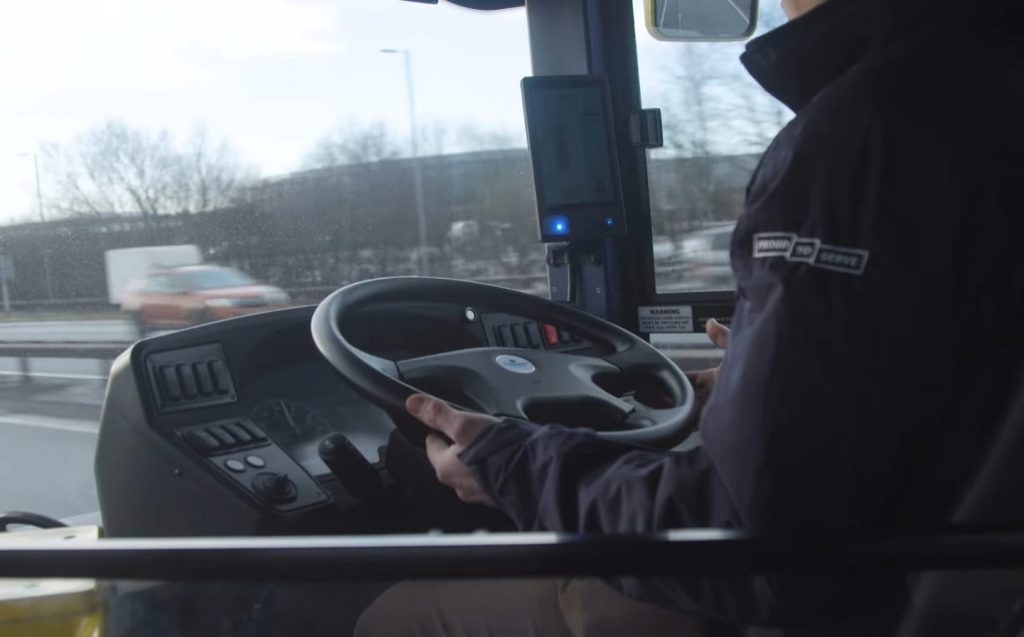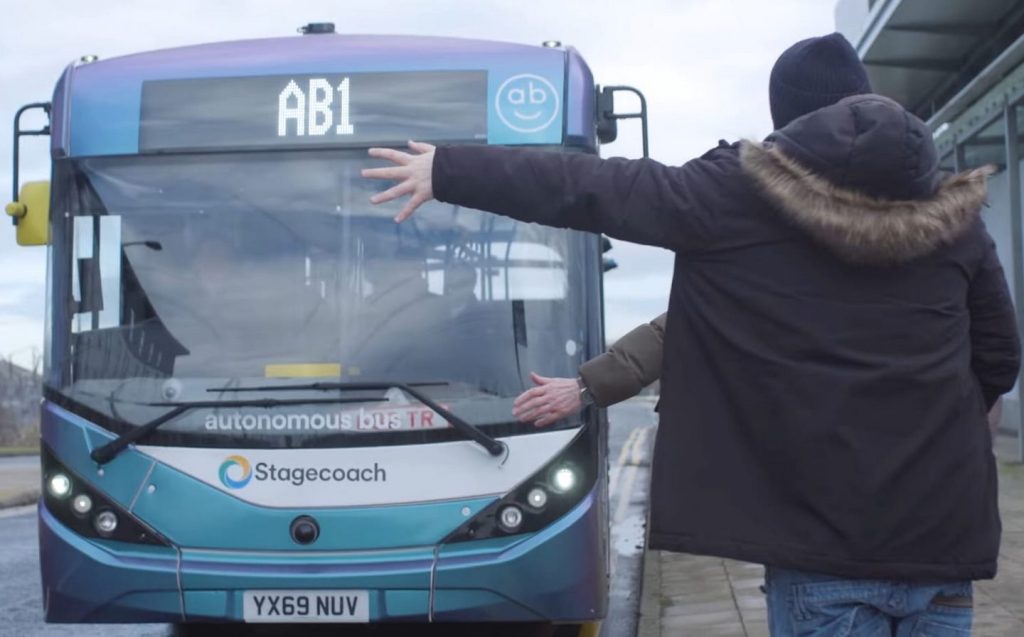UK’s first autonomous bus service launched in Scotland, carrying up to 10,000 passengers per week
Has two staff on board each bus
Britain’s first autonomous bus service opened to passengers today (May 15) signalling the first steps in a potential public transport revolution.
The AB1 (prounounced “Abby”) service, operated by Stagecoach, comprises five buses driving a 14-mile route across the Forth Road Bridge from Ferrytoll Park & Ride in Fife to Edinburgh Park Transport Interchange.
The technology used includes sonar, camera and radar sensors, as well as artificial intelligence processing, to deliver a more comfortable ride for the passengers, as well as reducing brake and tyre wear, in turn reducing overall emissions.
Over the course of its two-year trial run, the CAVForth project — part-funded by the government’s Centre for Connected and Autonomous Vehicles (CCAV) — will transport up to 10,000 passengers per week to demonstrate the application of autonomous technology in the real world.
The AB1 buses take to Scottish roads having completed one million miles of testing and are claimed to be equipped to deal with all traffic and weather conditions. On the road, the buses will receive direct information from traffic light systems, enabling them to manage their speed in between lights in an efficient manner.

While the buses are described as “autronomous”, there will be two members of staff on board at all times, including a “safety driver” — required by law to stay in the driver’s seat and monitor the behaviour of the bus, as well as its technology, and be prepared to take control of the vehicle in the case of an emergency.
For the first weeks of the service, the driver will also take control for small sections of the route, and when emergency service vehicles approach or diversions are in place, though Stagecoach claims 90 per cent of the journey will be carried out in autonomous mode.
An additional member of staff, known as a “captain”, will be present in the passenger area and can explain the autonomous process while engaging with the passengers on board, in a manner similar to bus conductors of the past.
The project is the result of a collaborative effort from many partners, including Transport Scotland, Edinburgh Napier University, Alexander Dennis, Stagecoach, Bristol Robotics Lab and the University of the West of England.
While the buses first entered testing in 2018, during which a prototype bus drove itself around a depot and parked, the technology used has been in research and development for almost ten years, with Fusion Processing Ltd responsible for much of the programming and autonomous development.
According to Fusion Processing’s CEO, Jim Hutchinson, the pilot is “globally significant and marks a step change in the operation of autonomous commercial vehicles on public roads”.
Although similar technology is already in use in the Chinese city of Chongqing, where autonomous buses — known as “Robobuses” — can be used by the public, they are limited in size and only accommodate a small number of passengers at a time, while the AB1 service features full-sized buses.
Scottish Transport Minister Kevin Stewart, who officially launched the initiative on Thursday last week, praised the “innovative and ambitious CAVForth Project” and stated his desire for Scotland “to continue to be at the forefront in the development of Connected and Autonomous Vehicles”.
He added that “the start of this live trial will really help the country establish its credentials on the world stage”.
Further developments to the autonomous route are expected, with an extension into Dunfermline city centre planned for 2024.
An additional bus will be added to the autonomous fleet at the same time, paving the way for future growth.

It is hoped that the launch of the autonomous service in Scotland could lead to improvements in safety and a reduction in emissions, with Alexander Dennis managing director Paul Davies saying:
“We believe that automated driving systems like the one we are trialling in CAVForth will further improve safety by reducing reaction times, as well as offering the ability to drive buses in a more efficient manner by optimising acceleration and deceleration to deliver significant energy savings and reduced wear and tear on the vehicle.”
Professor Nick Antonopolous, deputy vice chancellor at Edinburgh Napier University, said: “Automation offers an opportunity to transform the ways we get around in years to come, while improving safety and reducing energy consumption.”
Related articles
- After reading about the UK’s first autonomous bus service, you might be interested to hear that there are autonomous buses in China too
- You may also like to read about The Times trying out a driverless taxi in San Francisco
- Did you hear that Apple has scaled back its autonomous car plans?
Latest articles
- Best-selling cars 2024: The UK’s most popular models
- New Volkswagen California camper based on car underpinnings and available as a hybrid
- F1 2024 calendar and race reports: What time the next grand prix starts and what happened in the previous rounds
- Sci-fi inspired Ferrari 12Cilindri replaces 812 Superfast, powered by 819bhp unassisted V12 engine (video)
- New Renault Symbioz adds to French carmaker’s fresh crossover SUV assault
- Red Bull confirms Adrian Newey’s departure, but where next for the F1 designer?
- Lotus shows off its work on British Cycling’s Paris Olympics bicycle
- New Aston Martin Vanquish to get V12 engine with 824bhp
- Cupra updates Leon and Formentor with sharp styling and longer-range hybrids













